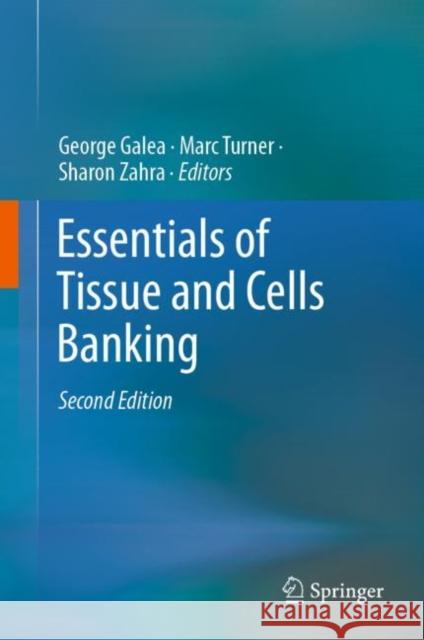Essentials of Tissue and Cells Banking » książka
topmenu



Essentials of Tissue and Cells Banking
ISBN-13: 9783030716202 / Angielski / Twarda / 2021 / 288 str.
Essentials of Tissue and Cells Banking
ISBN-13: 9783030716202 / Angielski / Twarda / 2021 / 288 str.
cena 564,88
(netto: 537,98 VAT: 5%)
Najniższa cena z 30 dni: 539,74
(netto: 537,98 VAT: 5%)
Najniższa cena z 30 dni: 539,74
Termin realizacji zamówienia:
ok. 22 dni roboczych
Dostawa w 2026 r.
ok. 22 dni roboczych
Dostawa w 2026 r.
Darmowa dostawa!
Kategorie BISAC:
Wydawca:
Springer
Język:
Angielski
ISBN-13:
9783030716202
Rok wydania:
2021
Wydanie:
2021
Ilość stron:
288
Waga:
0.59 kg
Wymiary:
23.39 x 15.6 x 1.75
Oprawa:
Twarda
Wolumenów:
01
Preface
1. Live Donors of Tissue
2. Deceased Tissue Donors
3. Banking and Use of Umbilical Cord Blood
4. Ocular tissue banking
5. Banking of Heart Valves
6. Cryopreservation and Banking of Haematopoietic Progenitor Cells
7. Storage, Processing and Preservation
8. Cryopreservation in tissue banking
9. Sterilisation by Irradiation
10. Screening the tissue donor for infectious agents
11. Contamination in the Tissue Way
12. Establishing a Quality System in a Tissue Establishment
13. IT System requirements for Tissue and Cell Banking
14. Ethical and Regulatory Aspects of Cell and Tissue Banking
15. Human embryonic stem cell banking for clinical applications – 20 years from their isolation
George Galea
Following house jobs in Hartlepool and Aberdeen Dr. Galea became lecturer in Haematology at Aberdeen University and obtained his MD (PhD equivalent) from Aberdeen University in 1990. Dr. Galea is a Fellow of the Royal College of Physicians of Edinburgh (FRCPE) and Fellow of the Royal College of Pathologists (FRCPath). Following accredited training in haematology, he specialised in blood transfusion and became a consultant in Aberdeen in 1989. He then proceeded to become Regional Transfusion Director in Inverness and Dundee between 1992-1999.
Dr Galea has always had an interest in tissue banking and was instrumental in establishing the first bone establishments in Aberdeen and Inverness. He has led tissue services in Scotland since 1999 following the establishment of Tissue banking as a national directorate within SNBTS. This directorate supplied tissues for Scottish patients.The range of tissues banked included- fresh frozen bones, tendons, heart valves, peripheral blood stem cells, skin and vessels. Later, cellular therapies and processing of islet cells for diabetic patients started in 2010 followed by the processing of limbal stem cells. Dr Galea has led his tissue establishments through a number of inspection processes by various regulatory and accreditation authorities. He has a special interest in GMP and clinical governance. Following his retirement from the NHS in 2013, he was appointed as a consultant to the Maltese Government advising on tissue and cell banking in Malta.
He sat on a number of UK committees in relation to Tissue banking and chaired the SAC on Donor care and Tissue and Cell banking for 6 years. He was elected President of the British Association for Tissue Banking between 2003-05. He represented the UK on various EU and WHO committees and also chaired the European Blood Alliance tissues and cell working group. He has published widely and has 60 publications in peer reviewed journals, including a number of leaders and editorials and in 2010 he has edited a book on tissue banking- Essentials for Tissue Banking. This is the second edition.
In his current position, Dr Galea sits on 2 EDQM and 1 EU committee representing Malta. He is also a Senior lecturer at the University of Malta and has established an MSc in Tissue and Cell banking. Dr Galea has won a number of scholarships including ones from the Council of Europe and the Myre Sim Travelling fellowship from the Royal College of Physicians. In 2014 he received the Ian Cook Memorial Award for outstanding achievement in his field.
It has been 10 years since the first edition of ‘Essentials of Tissue Banking’ has been published. There is still relatively little published on the technical and scientific principles on routine tissue and cell banking based on scientific principles. The 1st edition was very successful and, after a 10 year gap, there is a need of an update and an expansion of the book’s remit.
The format of the book follows that of the previous edition- split into 5 sections. Management of donors and the banking of common tissues and cells; Principles of storage and processing of tissues and cells; Ensuring the safety of the products by testing the donor, the tissues and the environment, supported by a quality system and an IT infrastructure- all working within the constraints of current regulatory and ethical environments.
This edition however provides a significant update. Many the chapters have been completely rewritten by different experts. Like the 1st edition, they were given a free hand in the way they wrote their chapter, with a guideline that they had to be concise, clear and up to date. The authors were also asked to provide the scientific and technical basis that provides the rationale of the processes they describe. Also, the scope of the book has been somewhat extended. In view of the fact that many cellular therapies are now routinely practiced, 2 new chapters have been added: one on the banking of haematopoietic stem cells and one on human embryonic stem cells. They have been deliberately chosen to illustrate the extreme spectrum of cellular therapies from one of the simplest to one of the most complex.
The intention of the book has remained the same: to cover and update banking of current practices in essential tissue and cell banking. It is therefore hoped that by keeping the book as concise and up to date as possible, it will find a place on the shelves of many tissue establishments.
Turner, Marc MARC TURNER was born in Toronto, Canada, but grew ... więcej >
1997-2025 DolnySlask.com Agencja Internetowa
Zobacz: Księgarnia Czeska | Wydawnictwo Książkowe Klimaty | Mapa strony | Lista autorów
KrainaKsiazek.PL - Księgarnia Internetowa
KrainaKsiazek.PL - Księgarnia Internetowa









